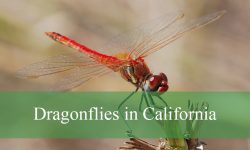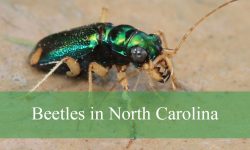Bats in Idaho play a vital role in keeping ecosystems balanced by controlling insect populations and aiding in pollination. The state is home to a variety of bat species, each uniquely adapted to different habitats ranging from forests to rocky cliffs. These bats contribute significantly to Idaho’s natural environment.
Learning about the different types of bats in Idaho helps raise awareness about their importance and supports efforts to protect them. For anyone interested in wildlife, identifying local bat species adds depth to understanding the state’s diverse fauna.
This article presents 15 types of bats in Idaho, complete with descriptions, identification tips, and fascinating facts. With helpful pictures and clear details, this guide makes it easier to recognize and appreciate the bats that thrive in Idaho.
Common Bats Found in Idaho
Big Brown Bat (Eptesicus fuscus)
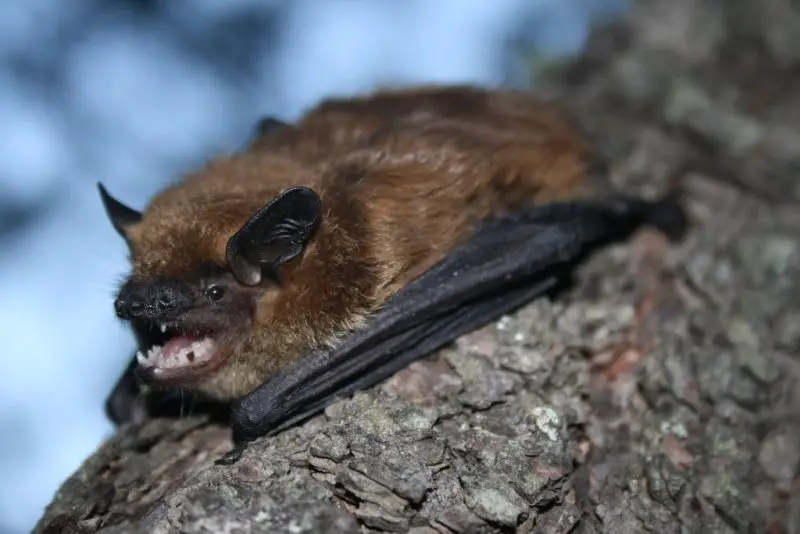
The Big Brown Bat is one of the most commonly encountered bats in Idaho and throughout North America. This medium-to-large bat species has a wingspan of approximately 13 to 16 inches and weighs around 14 to 25 grams. Its fur is typically a rich brown on the back with lighter, buff-colored underparts. The ears and snout are black and relatively short, giving it a compact and robust appearance.
This species is known for its adaptability to human structures. It often roosts in attics, barns, bridges, and even behind window shutters. During the summer, females form maternity colonies, while males tend to roost alone. Big Brown Bats are nocturnal insectivores, preying mostly on beetles and other hard-shelled insects using echolocation.
In terms of behavior, Big Brown Bats emerge shortly after sunset and can fly relatively fast with strong, steady wingbeats. They hibernate in caves, mines, and buildings during the winter months. Their ability to tolerate a wide range of temperatures helps them survive Idaho’s varied climate.
In Idaho, this species is widespread and commonly found in both urban and rural areas. It can be observed across forest edges, agricultural lands, river corridors, and residential zones. It plays a vital role in natural pest control by consuming large quantities of insects.
Little Brown Bat (Myotis lucifugus)
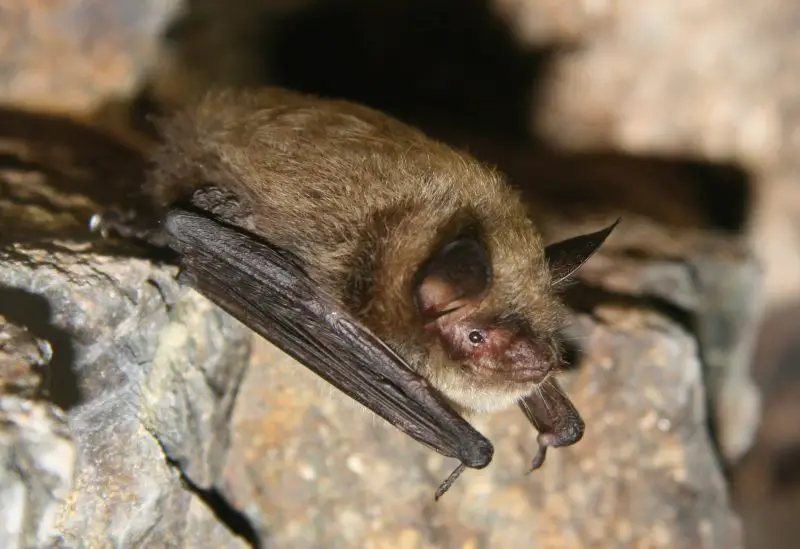
The Little Brown Bat is a small species with a wingspan of about 9 to 11 inches and a weight ranging from 5 to 14 grams. Its fur is shiny and dark brown, with a lighter underside. It has a relatively short snout and rounded ears, making it easy to distinguish from other Myotis species.
This bat prefers to roost in buildings, tree hollows, and bat boxes during the warmer months. In the wild, it may use caves or crevices for roosting. Little Brown Bats are also known for forming large maternity colonies, which can number in the thousands. They are highly efficient insect hunters, consuming hundreds of mosquitoes and midges per hour.
Little Brown Bats are strong fliers with rapid, fluttering wingbeats. They use echolocation to navigate and find prey in the dark. In winter, they hibernate in caves and mines, sometimes traveling long distances to reach suitable hibernacula. White-nose syndrome has had a devastating impact on their populations in many regions.
In Idaho, Little Brown Bats are found near rivers, lakes, wetlands, and forests. They are especially common in riparian corridors and are frequently seen emerging at dusk in search of insects. Conservation efforts are underway to monitor and support their populations due to disease-related declines.
Hoary Bat (Lasiurus cinereus)
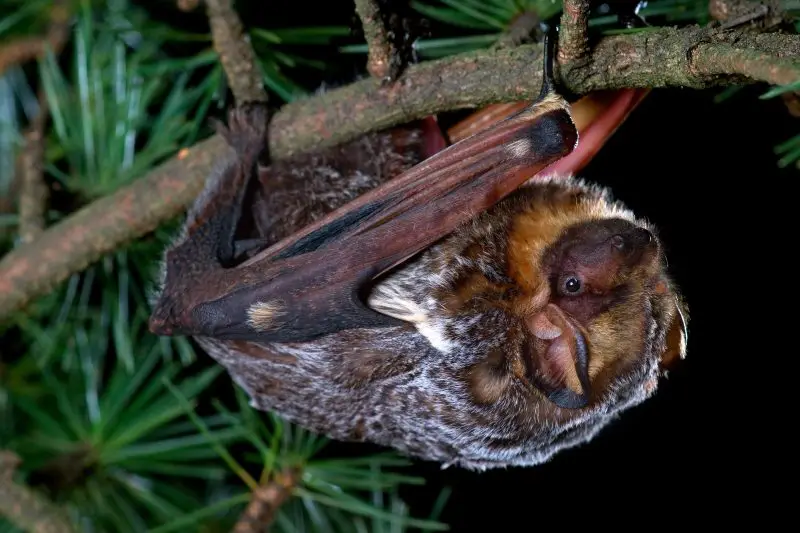
The Hoary Bat is the largest bat species in Idaho, with a wingspan of up to 15.5 inches and a body weight between 20 and 35 grams. Its name comes from the frosted, silver-tipped appearance of its fur, which is thick and dark brown. The fur extends to cover part of the tail membrane, which helps it retain heat.
Unlike many other bats, the Hoary Bat is solitary and roosts alone in the foliage of large trees. It is rarely seen in buildings or caves. During migration, it travels long distances and can be found at various elevations. Hoary Bats are nocturnal and feed on moths, beetles, and other flying insects.
Their flight is swift and direct, often occurring high above the ground. They are known to migrate through Idaho during the spring and fall, moving between summer breeding areas and warmer wintering grounds. They rely on forested areas for roosting and tend to avoid open terrain.
In Idaho, Hoary Bats are typically observed in forested mountain regions, especially in the central and northern parts of the state. Their presence is more common during migration seasons, and they are vulnerable to wind turbine collisions, making conservation attention important.
Silver-haired Bat (Lasionycteris noctivagans)
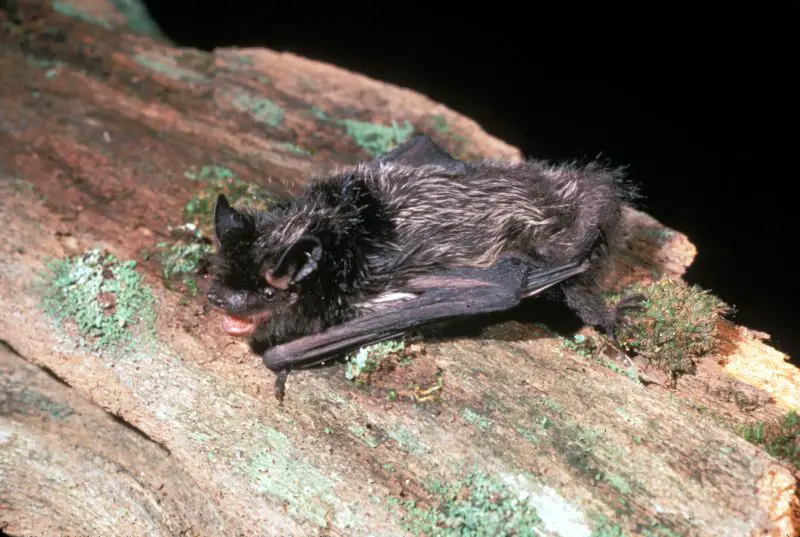
The Silver-haired Bat is a medium-sized bat with a wingspan of 11 to 13 inches and a weight of about 8 to 12 grams. It has dark brown to black fur with distinctive silver frosting on the tips of the hairs, giving it a unique and attractive appearance. This species has short ears and a slightly flattened skull.
Silver-haired Bats prefer to roost in tree bark crevices, behind loose bark, or in wood piles. They are rarely found in buildings and are more associated with mature forests. They are solitary or found in small groups and are most active during twilight and early night hours.
Their flight is slow and maneuverable, which helps them hunt in cluttered forest environments. They feed on a variety of soft-bodied insects, including moths, flies, and mosquitoes. In colder months, they may migrate to warmer areas or find insulated places to hibernate.
In Idaho, Silver-haired Bats are typically found in forested areas, especially near water bodies like streams and lakes. They are most common in central and northern Idaho and are frequently observed during migration periods in the spring and fall.
California Myotis (Myotis californicus)

The California Myotis is one of the smallest bats in Idaho, with a wingspan of 8 to 10 inches and a body weight of only 4 to 6 grams. It has light brown or tan fur on its back and paler underparts. Its ears are relatively long and narrow, and it has a small, pointed face.
This species roosts in a wide range of habitats, including rock crevices, tree bark, mines, and buildings. It often chooses locations with minimal disturbance and good cover. During the summer, females form small maternity colonies, while males are usually solitary.
California Myotis have a fluttery, erratic flight pattern that allows them to navigate through dense vegetation. They feed primarily on small insects such as flies and gnats, which they catch in flight. They emerge shortly after sunset and are often seen foraging close to the ground.
In Idaho, the California Myotis is distributed widely, particularly in dry, open forests and shrublands in southern and western parts of the state. It is adaptable to various elevations and is often detected during acoustic surveys of bat populations.
Western Small-footed Myotis (Myotis ciliolabrum)

The Western Small-footed Myotis is a diminutive bat species with a wingspan of 8 to 10 inches and a body weight between 4 and 6 grams. Its fur is yellowish-brown with a paler underside, and it has distinctive black facial markings and very small feet, which give the species its name.
This bat typically roosts in rock crevices, under bark, or in abandoned buildings. It is a solitary species and is most often encountered in arid or semi-arid regions. Despite its small size, it is a strong flyer and uses agile flight patterns to catch insects in cluttered spaces.
Western Small-footed Myotis are insectivorous, feeding on moths, flies, and beetles. They tend to forage close to the ground or along cliff faces. Their echolocation is adapted for detecting prey in complex environments.
In Idaho, this species is primarily found in rocky canyons, sagebrush deserts, and forested foothills, especially in southern Idaho. It is considered uncommon but widespread across suitable habitats.
Long-legged Myotis (Myotis volans)
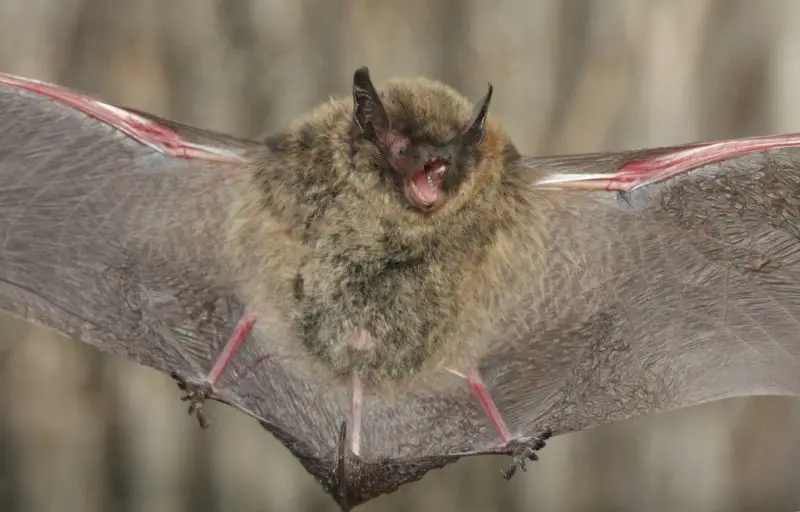
The Long-legged Myotis is a medium-sized bat with a wingspan of 10 to 12 inches and a body weight of 7 to 9 grams. It has reddish-brown fur with lighter underparts and is named for its relatively long legs, which aid in capturing prey.
It prefers roosting in trees, under bark, or in rock crevices. Occasionally, it may use buildings or caves. This species is often associated with montane and subalpine forests and is particularly common in higher elevations.
The Long-legged Myotis is a swift and agile flier, feeding on a wide range of flying insects, particularly moths. It often forages high above the ground and can travel long distances from its roost to feeding areas.
In Idaho, this bat is widely distributed, especially in forested regions of central and northern parts of the state. It is often detected during acoustic monitoring in national forests and wilderness areas.
Long-eared Myotis (Myotis evotis)
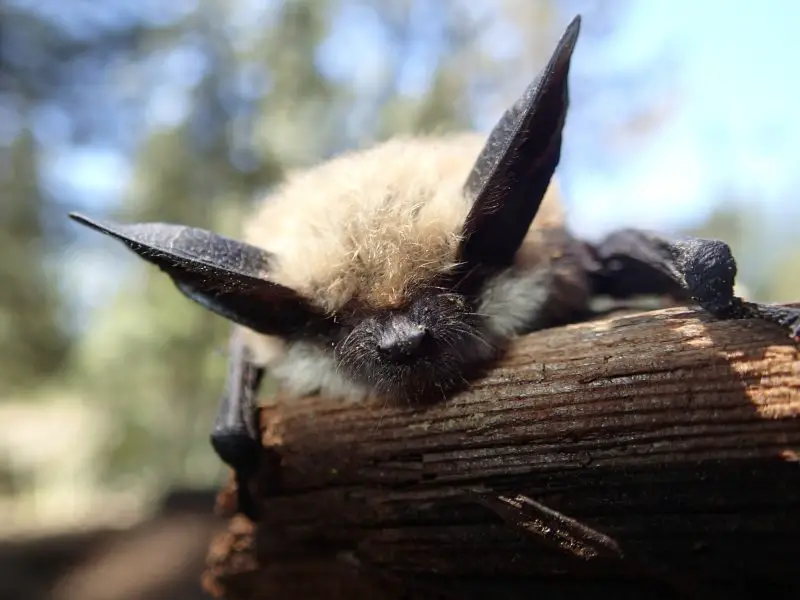
The Long-eared Myotis is a small to medium-sized bat with a wingspan of 9 to 11 inches and a body weight of about 5 to 7 grams. Its most distinctive feature is its long, narrow ears, which often extend beyond the snout when laid forward.
It prefers roosting in tree cavities, rock crevices, or under bark. It is also known to use old buildings and mines. This bat is strongly associated with coniferous forests and is often found near streams or other water sources.
This species is a slow but highly maneuverable flier, allowing it to glean insects off surfaces like foliage and rocks. It feeds on moths, beetles, and other insects, often foraging close to vegetation.
In Idaho, the Long-eared Myotis is commonly found in forested habitats in mountainous regions, especially in the central and northern parts of the state. It is frequently recorded during bat surveys in protected forested zones.
Fringed Myotis (Myotis thysanodes)
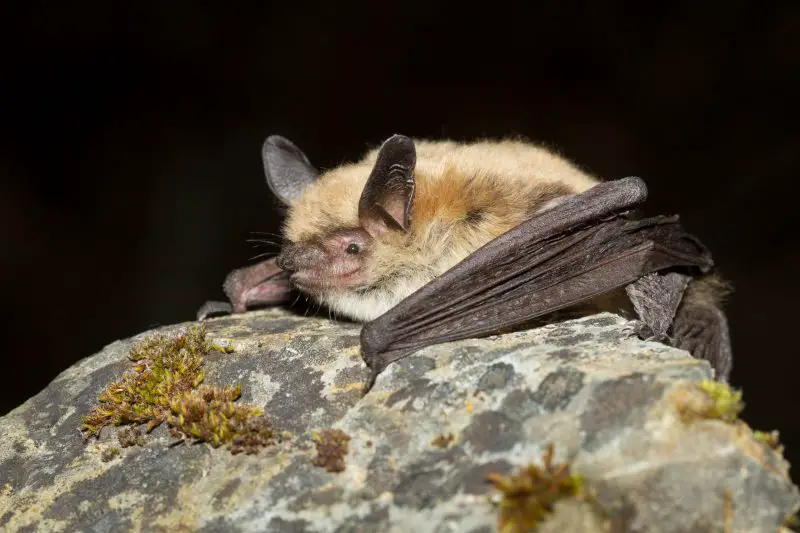
The Fringed Myotis is a medium-sized bat with a wingspan of about 10 to 12 inches and weighs between 6 and 10 grams. It has long, silky brown fur and a distinctive fringe of stiff hairs along the edge of its tail membrane, which gives the species its name.
It typically roosts in caves, mines, rock crevices, and buildings. This species favors dry woodlands and desert scrub habitats. Females form maternity colonies during the summer months, while males tend to be solitary.
Fringed Myotis forage primarily for beetles, which they can detect and catch using slow, maneuverable flight. They are known for their ability to glean insects from surfaces and are active at low flight heights.
In Idaho, this bat is considered uncommon but is found in southern and southwestern parts of the state, particularly in areas with suitable roost sites like rocky cliffs and abandoned structures.
Yuma Myotis (Myotis yumanensis)
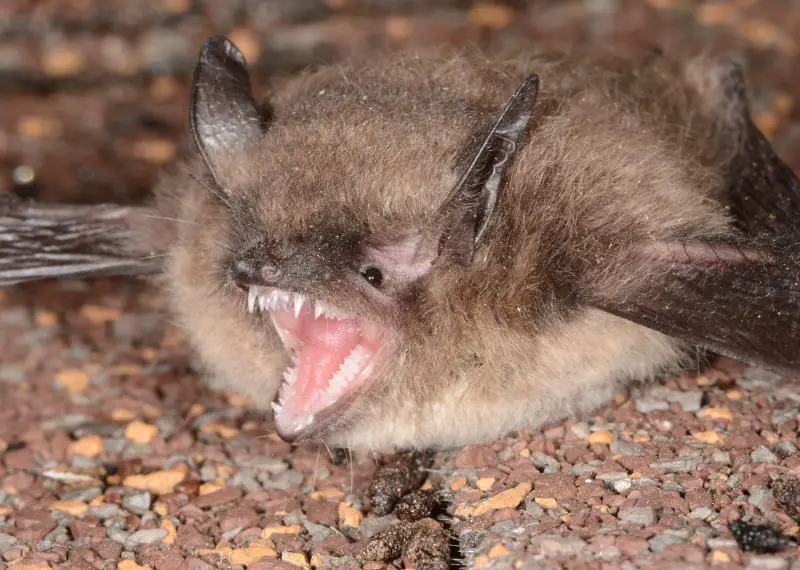
The Yuma Myotis is a small bat with a wingspan of 8 to 10 inches and a weight of about 6 grams. It has light brown to grayish fur with a pale underside. It closely resembles the Little Brown Bat but has shorter fur and a less glossy appearance.
This species prefers to roost near water, including under bridges, in buildings, and in tree cavities. It forms large maternity colonies in summer and often shares roosts with other Myotis species. It is active shortly after sunset and continues foraging through the night.
Yuma Myotis primarily feeds on aquatic insects such as midges, caddisflies, and mosquitoes. Its flight is quick and low, often just above the surface of water bodies.
In Idaho, Yuma Myotis are commonly found in lowland areas near rivers, lakes, and marshes. They are most numerous in southern and western Idaho and are often recorded during bat monitoring projects near water.
Canyon Bat (Parastrellus hesperus) – also known as Western Pipistrelle
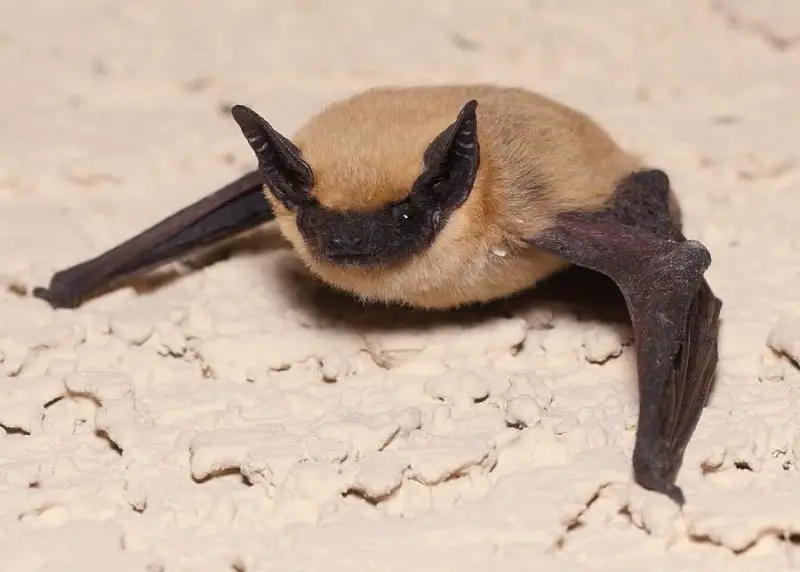
The Canyon Bat is one of the smallest bat species found in Idaho, weighing only 3 to 6 grams with a wingspan of about 7 to 9 inches. It has pale brown or yellowish fur and short, rounded ears, giving it a compact and delicate appearance. Its small size and light coloring help it blend into rocky canyon environments.
This bat prefers to roost in narrow rock crevices, cliff faces, and canyon walls, often in arid or semi-arid regions. It is usually solitary or found in small groups rather than large colonies. Canyon Bats are known for their fluttery flight style and are among the earliest bats to emerge at dusk.
They feed primarily on small flying insects, catching them close to rock surfaces or vegetation. Their foraging behavior is well-adapted to their rugged, rocky habitats where insect prey can be abundant in warmer months.
In Idaho, Canyon Bats are mainly found in the southern and southwestern parts of the state, especially within desert-like areas such as the Snake River Plain and nearby canyons. Their preference for rocky, dry environments limits their range but makes them an important part of those ecosystems.
Townsend’s Big-eared Bat (Corynorhinus townsendii)
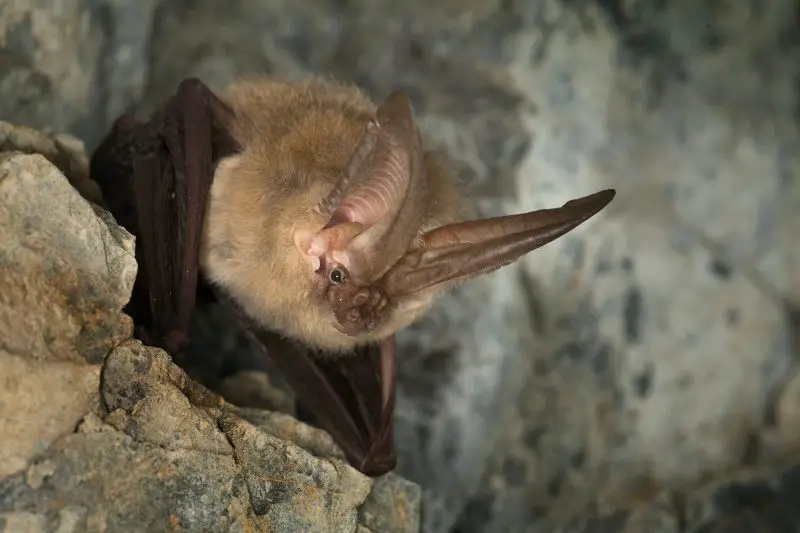
Townsend’s Big-eared Bat is easily recognizable by its enormous ears, which can measure nearly half the length of its body. It has soft brownish-gray fur and a wingspan ranging from 12 to 14 inches. When at rest, its large ears often curl back like ram’s horns, a distinctive feature unique to this species.
This bat prefers to roost in caves, abandoned mines, and old buildings, favoring quiet and undisturbed locations. It is particularly sensitive to disturbance, especially during maternity periods and hibernation. Townsend’s Big-eared Bat forages by gleaning insects from foliage and often flies slowly through dense vegetation.
Their diet mainly consists of moths, and they use both passive listening and echolocation to locate prey. During winter, they hibernate in cold caves, relying on stable conditions to survive the colder months.
In Idaho, this species is locally common in areas with suitable roosting habitats such as lava tubes, caves, and mines. It is mainly found in the southern and central parts of the state. Conservation efforts focus on protecting these critical roosting sites.
Pallid Bat (Antrozous pallidus)
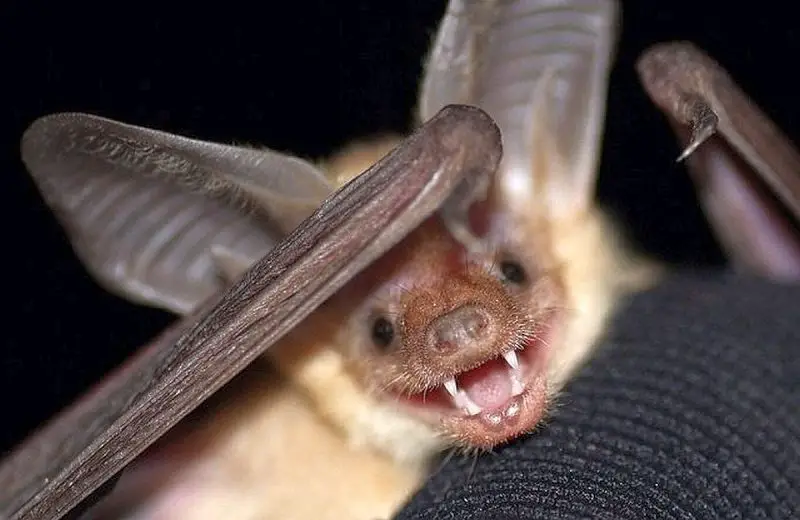
The Pallid Bat is a large, pale-colored bat weighing between 20 and 30 grams with a wingspan of 14 to 16 inches. Its light buff or cream-colored fur and large ears give it a ghostly appearance. Unlike many bats, Pallid Bats have strong legs and clawed thumbs, which they use to catch prey on the ground.
This species is unique in its hunting behavior as it often hunts terrestrial prey like crickets, beetles, and even scorpions by landing and crawling toward them. Their echolocation is adapted to detect both movement sounds and airborne prey, making them versatile predators.
Pallid Bats roost in rock crevices, cliffs, buildings, and hollow trees. They are nocturnal and tend to emerge later in the evening compared to other bat species, reducing competition for food.
In Idaho, they are found mostly in arid and semi-arid regions, especially in southern areas with rocky terrain and canyon systems. Their preference for these environments influences their limited but important distribution.
Spotted Bat (Euderma maculatum)

The Spotted Bat is one of the most visually striking bat species in North America. It has jet-black fur with large white spots on its shoulders and rump, bright pink ears, and a wingspan ranging from 14 to 16 inches. Weighing around 12 to 20 grams, it is rarely seen due to its secretive nature.
This species roosts primarily on high cliff faces and is difficult to observe in the wild. It is often detected through its distinctive high-frequency echolocation calls, which can sometimes be heard by humans. Spotted Bats feed mainly on large moths and other nocturnal insects.
They prefer remote, quiet habitats with rugged terrain and forage in open spaces, flying alone rather than in groups. Due to their rarity and specialized habitat needs, Spotted Bats are considered a conservation concern in many regions.
In Idaho, they are found mainly in southern and central areas with suitable rock cliffs and canyon systems. Acoustic surveys are typically used to confirm their presence due to their elusive habits.
Northern Long-eared Bat (Myotis septentrionalis)
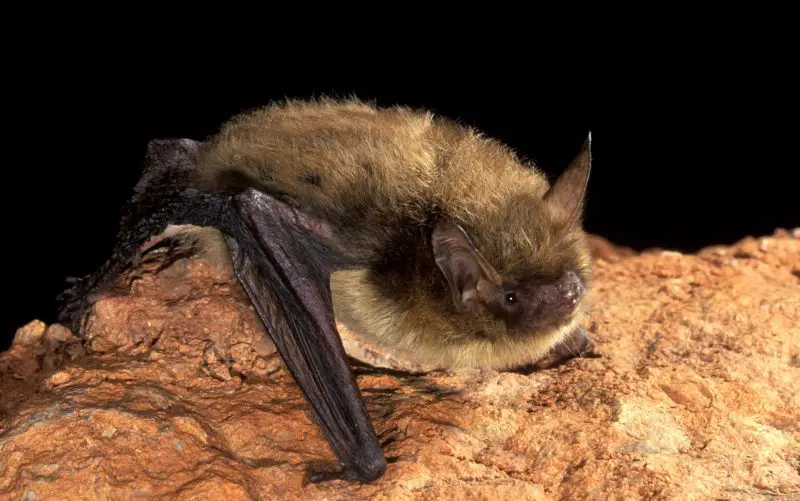
The Northern Long-eared Bat is a small bat with a wingspan of 9 to 10 inches and weighing between 5 and 8 grams. It is characterized by its long ears and dull brown fur. This species closely resembles the Long-eared Myotis but differs slightly in anatomical details and range.
This bat roosts primarily in trees, under bark, and occasionally in buildings. It favors mature, contiguous forests with minimal human disturbance and is known for gleaning insects off surfaces rather than catching them mid-flight.
The Northern Long-eared Bat has been severely impacted by white-nose syndrome and is listed as threatened in many areas. Its echolocation calls are quiet and it typically forages close to vegetation.
In Idaho, this species is very rare and has only been recorded in the northeastern parts of the state. It likely exists in limited numbers in suitable forested habitats but is not commonly detected due to its low population density and elusive behavior.


